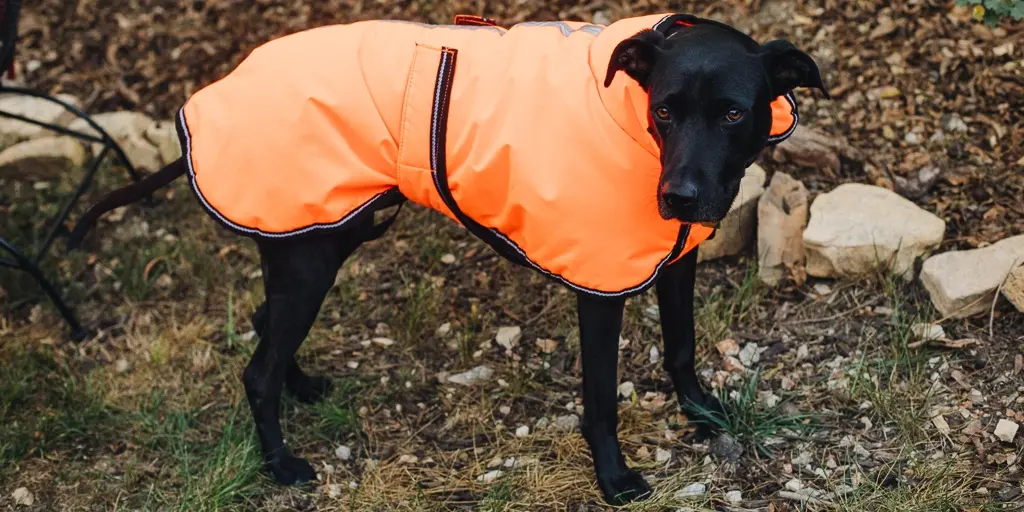Pick the right coat for your dog this winter!
- Surabhi Venkatesh
- Jan 9, 2023
- 3 min read
Winters have descended upon most of us. This means that woolens for us and our dogs will be out. But should our dogs be dressed this winter?
The answer is - it depends. Most dogs develop a thick undercoat that acts as a woolen layer as the season becomes colder. While this does help them to stay warm, it may not be enough to protect them from the cold and wind. The general approach should be - if you are adding layers to your clothes, you might want to check if your dog needs some too.
L to R: A streetie in peak winter in Delhi finds some warmth in mud; dogs like the Himalayan Sheepdog or Bhotia are commonly found in the northernmost parts of India. These are mountainous regions where temperatures usually drop below 0-degree celsius. A lot of these dogs are streeties and have extremely thick winter coat that keeps them well protected.

Streeties in a busy marketplace in an Indian city. During the cold, caregivers will often clothe street dogs with warm jackets. Some however actively resist wearing them, like one of the dogs in the picture.
The following dogs can certainly benefit from being offered a coat:
Short haired dogs
Dogs that are sensitive to the cold
Senior dogs
Puppies
Dogs with musculoskeletal conditions
Sick dogs
Dogs with poor immunity
Someone I was chatting with recently mentioned how when she offered her dog a thick coat to wear, her dog refused. She instead settled for a think t-shirt and over the course of the day, expressed willingness to wear something thicker.
How to choose the right winter coat?
While picking coats for your dogs, it's important to keep in mind:
Fabric quality
Coat Design
Coat Fitting
Fabric Quality
The fabric should feel soft and warm - serving the purpose of a coat. Some dogs can find woolen materials very irritating to the skin; for some, fleece might be a better choice. Some companies also make coats out of softshell which is water-repellent and elastic, making it a good choice for dog clothing. But this might be a limited and expensive choice.
L to R: Mutton loves her fleece blankets in the winter; Maya seems to have a preference for something more woolen
Coat Design
Designs like the ones below can restrict movement for the dog - see how the fabric runs across the shoulder. Dogs need to be able to use their full shoulder to move comfortably. This kind of design can be restrictive to that purpose.
Image Source: Google Images
Coat Fitting
While you might enjoy the oversized look, that might be uncomfortable for your dogs. With a coat on, your dog should be able to move, stretch, sit and stand comfortably. An appropriate fit would be one that covers the full belly, isn't too tight for the dog to feel suffocated, and isn't too loose for the dog to look like they are 'swimming' in it.
The perfect winter coat for your dog
All in all, your dog's coat should meet the following criteria:
Allow for free movement
Cover as much of the body, including hips, joints, and the belly
Be noiseless - some materials make sounds/noises with every movement
Be easily washable
Is lightweight & not bulky/heavy
Is functional, and not just aesthetically suited
A harness can be worn easily over it

This seems to meet the above criteria well, although it seems like the dog could wear a size bigger.
Image source: Google Images
Should we leave dogs in their winter clothing all the time?
Preferably not. The coat needs some amount of breathing time throughout the day, even if it's for a few minutes. I usually take my dogs' coats off when the winter sun is bright and shining. It's an opportunity for the dogs to sunbathe, groom themselves and get some much-needed natural warmth. I have also found that consistent and long-term coverage of the dog's natural coat can lead to short-term skin conditions at a later point in time.
Unlike humans, dogs can't take off their winter coats when they feel too warm. It's helpful to observe if they are feeling too warm or uncomfortable and offer periods in the day when they don't have clothing on.

Luchi (L) and Mutton getting so much-appreciated winter sun without any clothing
Other ways to support the dog's natural coat include:
Including healthy fats like oils, and ghee in the dog's diet (to be fed in small quantities for dogs with pancreatitis)
Adding high-quality sources of Omega 3 fatty acids like fresh sardines and anchovies is a must during winters
Brushing the coat often
Topical applications like water + unfiltered apple cider vinegar can be sprayed onto the dog's natural coat to keep it hydrated (wait for at least 30 minutes before then putting on clothing)
Remember to offer your dog choices, and observe them and their preferences.
For more content, follow @luchiandmuttons on Instagram.















Comments